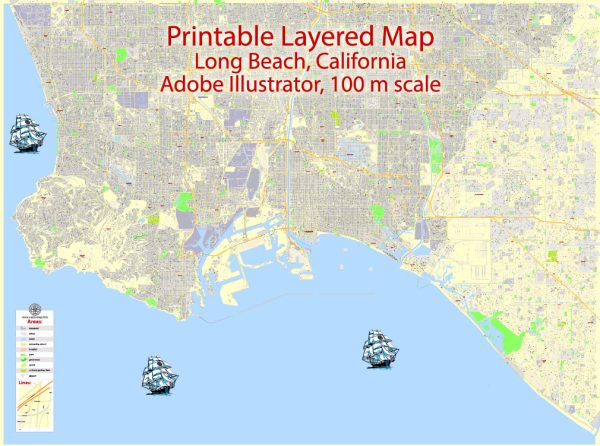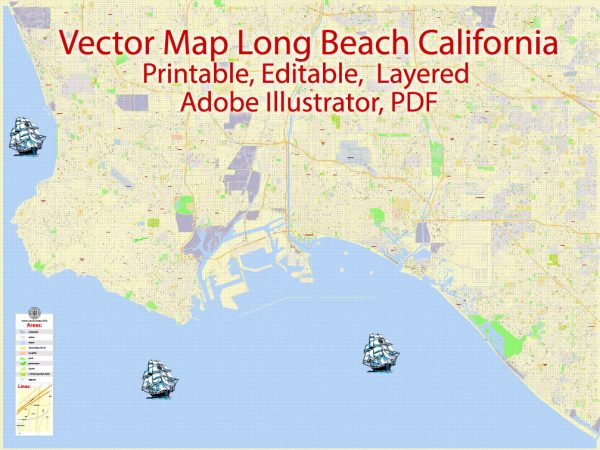Long Beach, California, has a rich history of urban development that spans several centuries. The city’s development can be traced back to the indigenous people who initially inhabited the area, followed by Spanish and Mexican influences, and eventually, the growth spurred by American expansion. Here’s an overview of the key historical milestones in the urban development of Long Beach:
- Indigenous Inhabitants: Long Beach was originally inhabited by the indigenous Tongva people. They lived in the region for thousands of years before the arrival of European explorers.
- Spanish and Mexican Periods: In the late 18th century, Spanish explorers, including Gaspar de Portolà and Junípero Serra, arrived in California. The area became part of the vast Spanish land grants, and Rancho Los Cerritos and Rancho Los Alamitos were established in what is now Long Beach.
- American Period and the Ranchos: With the Treaty of Guadalupe Hidalgo in 1848, California became part of the United States. The ranchos were divided and sold, leading to the development of the area for agricultural purposes.
- Railroads and the Birth of Long Beach: The Southern Pacific Railroad played a crucial role in the development of Long Beach. In the 1880s, developers saw the potential for the area as a seaside resort and port. The city was officially incorporated in 1888.
- The Pike and Amusement Parks: In the early 20th century, Long Beach became a popular tourist destination. The Pike, an amusement zone with a wooden roller coaster and other attractions, drew visitors. The arrival of the Pacific Electric Red Cars made the city easily accessible.
- World War II and Naval Presence: During World War II, Long Beach experienced significant growth due to its strategic location and the establishment of the Long Beach Naval Shipyard. The shipyard played a crucial role in the war effort and continued to be a major employer after the conflict.
- Post-War Boom and Suburbanization: The post-war period brought about a boom in population and development. Suburbanization became a trend, and new housing developments sprang up. Long Beach saw an increase in industrial and commercial activities.
- The Port of Long Beach: The Port of Long Beach, one of the busiest ports in the world, has been a key driver of the city’s economic development. It handles a significant portion of the nation’s trade and contributes to the city’s diverse economy.
- Urban Renewal and Redevelopment: In the mid-20th century, Long Beach, like many other American cities, experienced urban renewal efforts. This included the development of new public spaces, the construction of modern buildings, and efforts to revitalize certain neighborhoods.
- Modern Developments: Long Beach continues to evolve, with ongoing developments, revitalization efforts, and a diverse cultural scene. The city has embraced its waterfront location, promoting tourism, and hosting events like the Toyota Grand Prix of Long Beach.
Throughout its history, Long Beach has transformed from a small seaside community to a vibrant, diverse city with a strong maritime and economic presence, making it a key player in the Southern California urban landscape.



 Author: Kirill Shrayber, Ph.D.
Author: Kirill Shrayber, Ph.D.